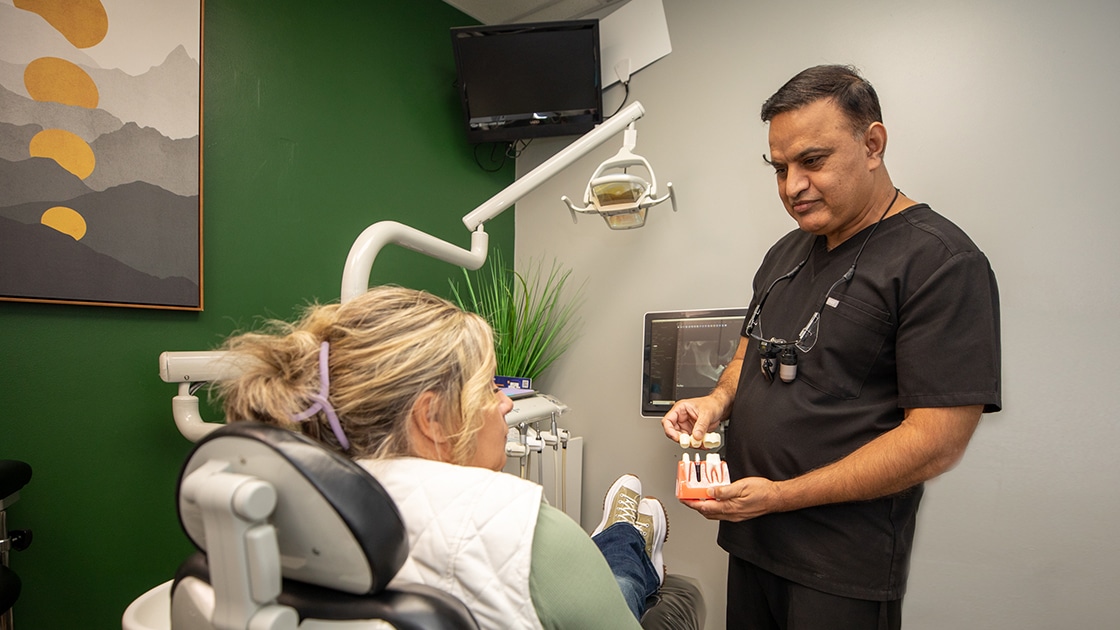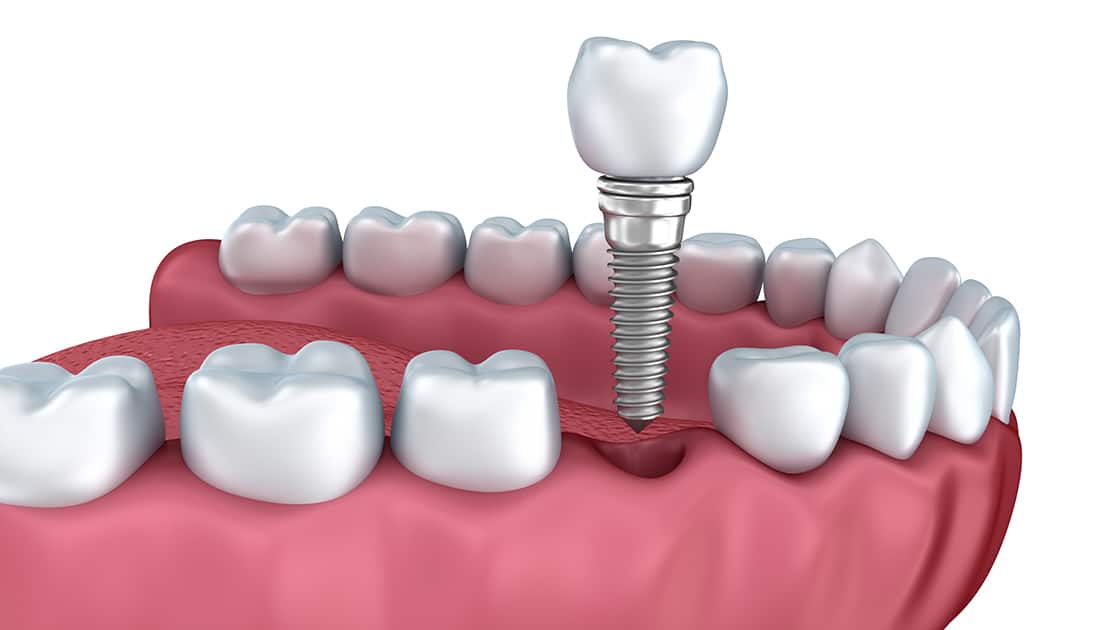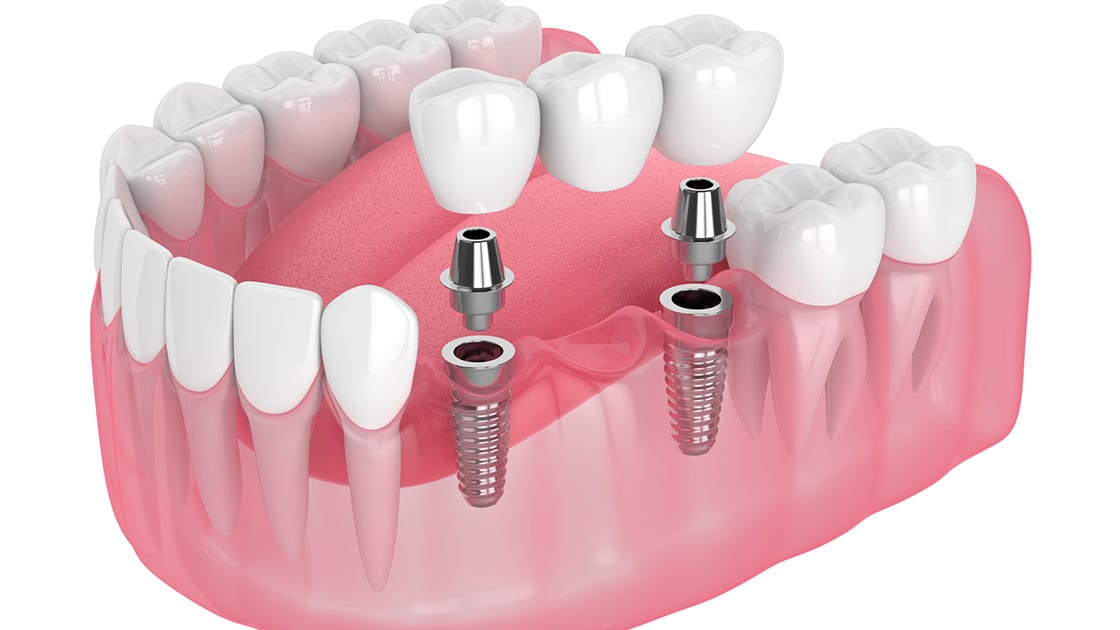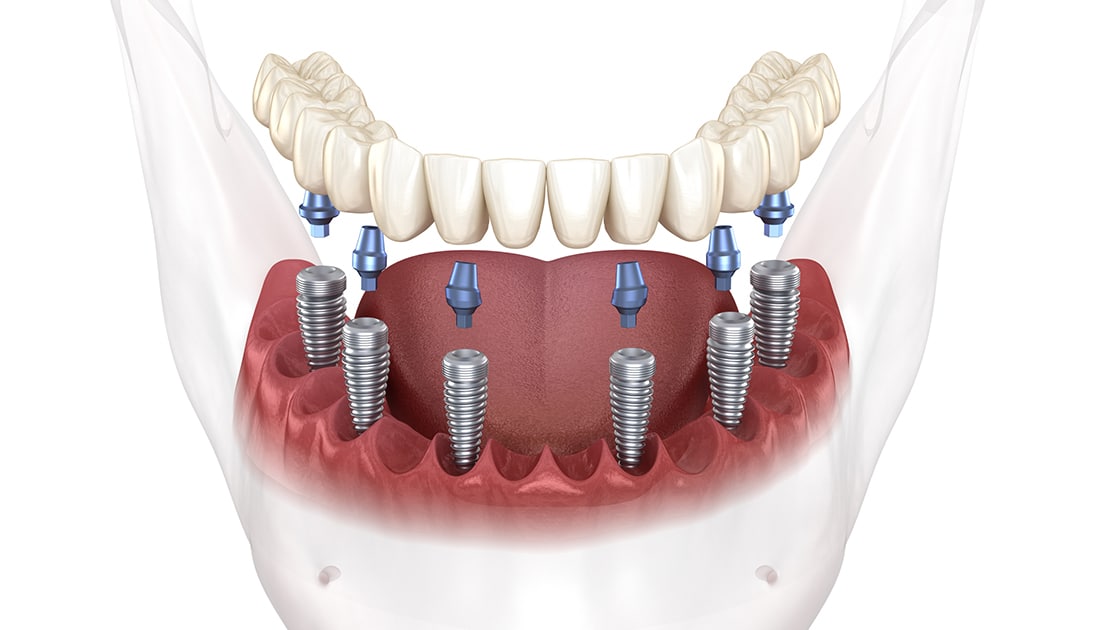The Dental Implant Process
- The area where the dental implant(s) will be placed is prepared.
- The tiny titanium anchors are inserted into the jawbone.
- As the area heals, the anchors begin to integrate with the bone over a period of several months.
- Following this integration process, also called osseointegration, abutment posts are connected to these anchors.
- Finally, a new dental restoration such as a crown or bridge will be securely fastened to the abutment post to complete the process.
Full Arch Implant Solutions
For patients missing many or all of their teeth, implant retained or implant supported dentures may be an alternative to traditional dentures. These solutions can simulate the look and feel of natural teeth and stay fixed in place with the implants acting as anchors. Using implants for retention or the support of dentures allows for a smaller and more comfortable base and less shifting of the prosthesis during use.
Guided Dental Implant Placement
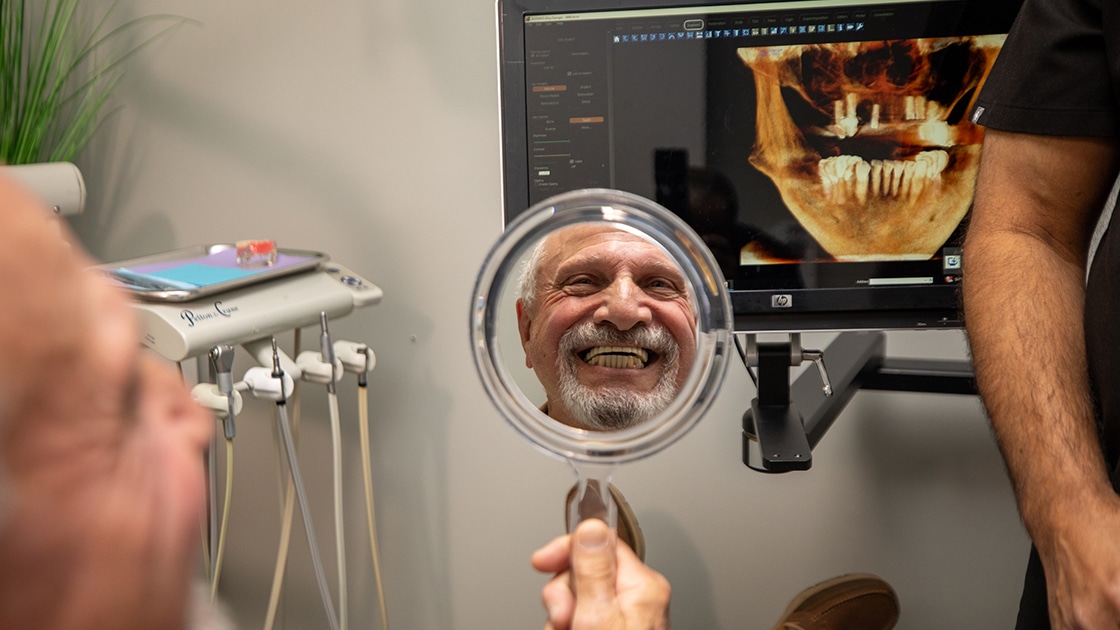
Using CBCT scans and restorative virtual treatment planning, along with specialized training, Dr. Noor is able to obtain a virtual 3-D model that allows him to view multiple aspects of implant placement and restoration, resulting in optimal aesthetics, function, and longevity for the patient’s final restoration.
Once planning is complete, specialized software can be used to create a surgical guide that will used during implant placement to identify the exact location, angle and depth of the implant placement, increasing the accuracy, efficiency, and safety of the procedure.
Instructions Following Implant Surgery
Looking for a practice in the

